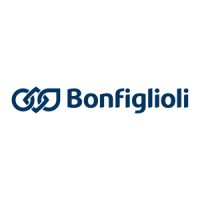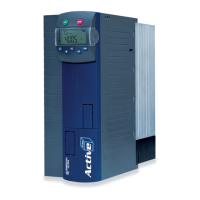ment.
In operation modes 10 to 15, it cannot be ruled out that a wrong direction of rotation
is determined in quick synchronization. For example, a frequency not equal to zero
may be determined although the drive is at a standstill. If there is no overcurrent, the
drive is accelerated accordingly. The direction of rotation is defined in operation
modes 11, 14 and 15.
The synchronization changes the parameterized starting behavior of the selected
configuration. First, the st
art command activates the search run in order to determine
the rotary frequency of the drive. In operation modes 1 to 5, the
motor current 647 is used for synchronization as a percentage of the Rated cur-
Current / Rated Motor Current
The sensor-less control is extended for the search run by a PI-Controller, which regu-
lates the parameterized Current / Rated Motor Current 647
integrating part of the current controller can be set via the parameters Amplifica-
tion
648 and Integral Time 649
. The control functions can be deactivated by setting
the parameters to 0.
If the Operation mode Synchronization 645 parameter was set to operation mode 1
to 5 (search run), the search run is not started before the Demagnetization time 633
If synchronization to the drive mechanism is not possible, the Braking current 631 is
impressed into the motor in operation modes 1 to 5 for the duration of the Braking
time
after search run 646
. The impress of the direct current set in the parameters of
the direct current brake (DCB) leads to a heating of the motor and should
only be
done for a short period in internally ventilated motors.
No.
Description Min. Max. Fact. sett.
Brak. time after search run
NOTE
The Flying Start (or Search) function is designed for the operation of motors without
brake. Brake motors may not be operated optimum
in individual cases (depending of
parameterization and brake control) with the Flying start function.
06/13 Operating Instructions ACU 143

